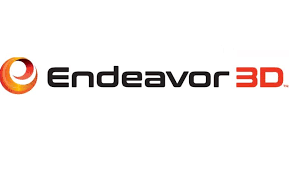
Equipment downtime is unacceptable. In the commercial environment, this results in loss of dollars and opportunities. On the battlefield, equipment downtime can be catastrophic and jeopardize the lives of servicemen and civilians alike. This requires governments, militaries, and defense contractors to adopt certain risk mitigation protocols and practices to minimize known and unknown challenges.
Additive Manufacturing (AM) or 3D printing has proven to be one of those technologies that offers flexible solutions to complex problems. In fact, the United States Department of Defense (DoD) published the Additive Manufacturing Strategy Report in 2021 that highlights three key initiatives using the technology:
- Modernizing national defense systems
- Increasing material readiness
- Enhancing Warfighters’ capabilities and innovations on the battlefield.
However, long before 2021, the US government and prime manufacturers were actively integrating AM into their research and development (R&D) labs and systems designs, and even installing equipment at forward operating bases (FOBs) around the globe. What started as a quick fabrication tool with polymer 3D printing progressed into the production of on-demand spares and repairs for field equipment, using both plastic and metal AM processes.
In 2022, the US government spearheaded the Additive Manufacturing Forward (AM Forward) initiative alongside key original equipment manufacturing (OEMs) to drive supply chain resiliency using AM in defense and commercial industries. The OEM participants, General Electric Aviation, Honeywell, Siemens Energy, Raytheon Technologies, and Lockheed Martin, are further incentivized to work directly with small to mid-size, US-based manufacturers to increase the utilization and standardization of AM. This includes 3D printing equipment providers, material specialists, and contract manufacturers (CMs).
All of this momentum further solidifies the use of AM within the defense industrial base. In the following article, I will share my four key reasons why the US DoD is outsourcing to CMs and why we play a pivotal role in modernizing the military and enhancing warfighter innovation.
1. AM Experience & Tools
There are countless AM technologies available on the market that vary in price, capability, resolution, material sets, repeatability, etc. This ecosystem can take time to navigate and determine which technology will satisfy the application requirements. Instead of spending countless hours on research, the US government, and others around the globe, are going straight to the CMs for guidance. Any CM worth its weight will have an experienced engineering team that has worked with various processes and materials, enabling their understanding of the technical nuances that can truly make a difference in the process. Not to mention, access to 3D scanning, design simulation, topology optimization, and other tools that complement 3D printing and enable users to optimize their design for full effect. Why recreate the wheel when you can rely on a resource with the experience and tools to help you get up to speed swiftly and simultaneously solve your problems?

Engineer maintaining a heavy marine helicopter
2. Access to New Technologies & Materials
CMs are on the leading edge of technology and typically have access to some of the most advanced systems on the planet. Their entire existence is to problem solve and integrate solutions on behalf of their customers. Regarding the US government and defense manufacturing sector, CMs offer a path towards learning, workforce development, and training on 3D printers and materials that could otherwise be difficult to obtain. Furthermore, many sophisticated metal 3D printing technologies come with stringent facility or material handling requirements and gaining access to those types of resources, without incurring the overhead costs or logistical nightmares, has a ton of value. In my experience, The US military is more focused on capability readiness and risk mitigation, and a pragmatic approach makes the most sense.
3. Application Development & Testing
Casting is a commonly accepted production method that has been used for generations.
However, the casting and forging industry has recently faced capability and capacity challenges, making the sourcing of essential components for critical weapons and support platforms difficult. In April 2024, America Makes launched an investigation to prove metal additive manufacturing as a rapid casting replacement solution that would “enable defense and economic stability.” This investigation includes participants from across the industry, likely OEMs and CMs with access to metal additive manufacturing technologies capable of qualifying and standardizing critical parts. Rapid casting is just one of the many noteworthy applications of AM and having a resource that can design, produce, test, and qualify those parts is a clear advantage.
Learn more about Endeavor 3D’s advanced quality control laboratory here.
4. Operational Readiness with On-Demand Parts
Rapid sustainment of aging assets or legacy parts is an important directive of the Defense Logistics Agency (DLA). The directive continues to be a driving factor for AM adoption within the military. Additionally, the ability to quickly design, test, and put drone devices and new autonomous vehicles into the field has become a widespread use case for AM. We are witnessing the use of agile technologies, like 3D printing, to build faster and more effective devices. I recommend reading the recent article published by the Air Force Material Command about designing and flying unmanned autonomous systems in 24 hours. Why is this relevant? CMs, like Endeavor 3D, are built to solve problems like this and capable of scaling production quickly. It is about reliability.
Looking Forward

At Endeavor 3D, we pride ourselves on being a partner, not just a provider. We understand the technical challenges that come with new product design or quick production requests. When it comes to the defense industrial base, we leverage our technology and technical experience to enhance the warfighter. Endeavor 3D is proudly located in The United States of America and is honored and humbled to support all branches of The United States of America’s Armed Forces. For their service and sacrifice, I remain forever grateful.
Very respectfully,
John Flynn
VP of Sales at Endeavor 3D.
Learn more at www.Endeavor3D.com or contact me directly at john.flynn@endeavor3d.com.
Subscribe to Our Email Newsletter
Stay up-to-date on all the latest news from the 3D printing industry and receive information and offers from third party vendors.
You May Also Like
The New BOD 3 Construction 3D Printer from COBOD, Already Deployed across Three Countries
Danish firm COBOD is releasing a new printer, the BOD3 3D Construction Printer. Already in use in Bahrain, Indonesia, and Angola, the track-based machine can print buildings sequentially, row by...
3D Printing News Briefs, October 12, 2024: IPO, Laser Path Optimization, & More
In 3D Printing News Briefs today, WOL3D India recently celebrated its IPO, while BLT signed a distribution agreement with Sicnova and SPEE3D announced a funding partnership with dual-use security investment...
3D Printing Webinar and Event Roundup: October 6, 2024
Things are picking back up in this week’s roundup, with many events, both virtual and in-person! Read on for all the details! 3D Printing News Unpeeled Our Executive Editor Joris...
America Makes Announces New Elected Members of 2024-2026 Executive Committee
Ohio-based America Makes, a public-private partnership for additive manufacturing driven by the National Center for Defense Manufacturing and Machining (NCDMM) non-profit, is the National Additive Manufacturing Innovation Institute (MII). It...





































